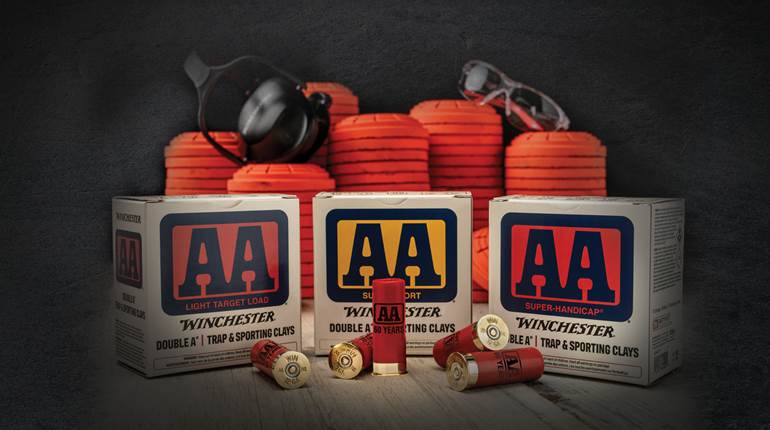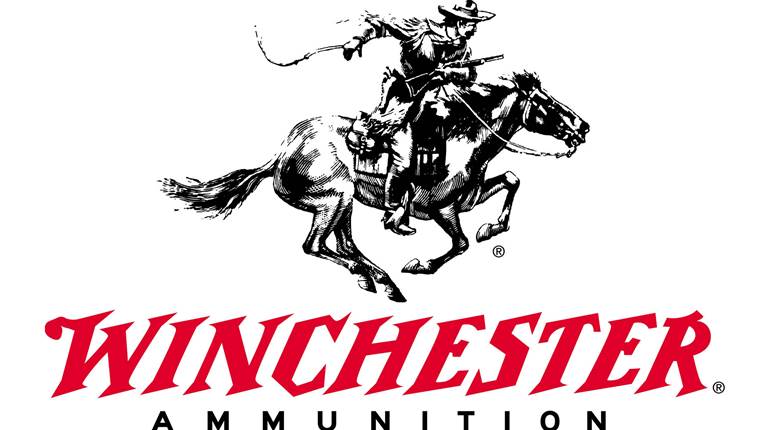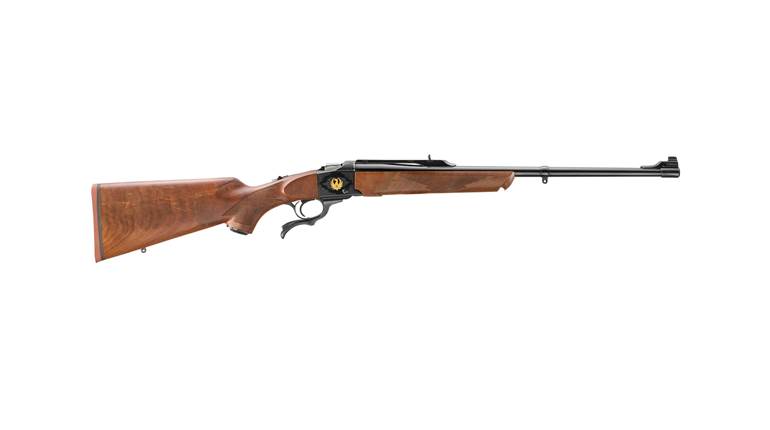
One might wonder what was going on in the designers’ heads at Winchester when they came up with the .405 Winchester. Yes, for a time, it was the most powerful rimmed cartridge in a lever-action rifle. Too, it eventually enjoyed some modest success in the company’s Model 1885 High Wall Single Shot, as well as a few single-shot and double rifles spawned in Europe. But the bullet diameter is 0.411". No other cartridge meant for a rifle uses 0.411" bullets. And although the Browning-designed Model 1895 rifle had a single-stack box magazine that would feed rimmed cartridges, the staggered-cartridge magazines found in most bolt-action rifles would never be able to handle the cartridge.
One bolt action, the Model 1885 Remington–Lee, which had a single-column box magazine, was chambered in .405 Win. from 1904 to 1906. The usual procedure for cartridge development centers around bullets that are already being manufactured—or at least a relatively common diameter. Idiosyncratic and proprietary cartridges may have some perceived benefits ballistically, but with rare exceptions, they usually are commercial failures.
Nonetheless, in 1904, Winchester brought out the cartridge chambered in its Model 1895 lever-action rifle. The case appears to have been based loosely off of the .40-72 Winchester black-powder cartridge, also found in the Model 1895 and was one of the original chamberings for that rifle. Ballistics for a 300-grain lead bullet were 1,425 f.p.s. or a 330-grain lead bullet at 1,380 f.p.s. The .40-72 Win. never really had a chance. For one thing, it didn’t offer anything you couldn’t get in a .45-70 Gov't. with much less expensive and more readily available ammo.
 .405 Win. (left) compared with .375 H&H (center) and .30-'06 Sprg. (right).
.405 Win. (left) compared with .375 H&H (center) and .30-'06 Sprg. (right).
Too, smokeless powder was on the scene now, and its much higher energy and velocities were well on the way to blow blackpowder cartridges out of the water. So a tweak here and a nudge there, and you had the .405 Win. using smokeless powder sending 300-grain jacketed bullets downrange with 37 percent more velocity and delivering nearly 40 percent more energy into the target. Whereas the .40-72 Win. was pretty much a yawner, the .405 Win. generated as fair amount of excitement, at least initially. In North America, it proved capable of taking any game animal, including large bears and moose. Across the pond in Africa, Europeans found it a capable round for plains game animals, though a bit light for large, dangerous and thick-skinned game. What hit the brakes on the .405 Win. was that relatively light, low-sectional-density 300-grain bullet.
That 300-grain bullet has a sectional density of just 0.254 and a ballistic coefficient of 0.250 (G1), and even though it starts out at 2,200 f.p.s., at 100 yards, it sheds a bit more than 300 f.p.s. By the time it has traveled 200 yards, it loses about a third of its velocity—down to 1,610 f.p.s. and dropped some 8.3" from a 100-yard zero. At 300 yards, this squat bullet is down to 1,370 f.p.s. and some 30.2" low. Energy levels drop similarly. The .405 Win. is fine out to 200 yards or so where it retains more than 1,700 ft.-lbs. of energy, but hit probability drops fast, especially with those buckhorn sights. Too, when the target is large and has a thick skin, getting that 300-grain bullet inside of the target enough to do any good past 200 or 250 yards can be problematic. For a time after its introduction, and with some British makers chambering the .405 Win., Kynoch loaded the cartridge.
Nonetheless, President Theodore Roosevelt loved the rifle and cartridge. calling it a medicine gun—not “big medicine” as many writers (including me) have erroneously reported in the past. Roosevelt’s 1909 safari to Africa remains the epic safari after taking some 500 animals with his son, Kermit. On that safari, they took two Model 95 Winchesters chambered in .405 Win., along with another chambered in .30-'03 Sprg. Roosevelt liked the Model 95 and the .405 Win. cartridge, but he had enough experience with it to recognize its limitations, especially on large, dangerous animals. He said it was fine for animals like giraffe, eland, lions and even hippos, but for animals like Cape buffalo and rhinoceros, he preferred “the heavy Holland”—a double they had chambered in .500-450 Nitro Express.
 Current production .405 Win. ammunition made by Hornady with 300-grain SP InterLock bullet.
Current production .405 Win. ammunition made by Hornady with 300-grain SP InterLock bullet.
Today, ammunition is a bit of an issue. Hornady makes .405 Win. ammo with its 300-grain SP InterLock bullet at 2,200 f.p.s. It is a good load, though with the metal buttplate on my Model 95, it makes my teeth rattle a bit. It’s not too bad for hunting, but you wouldn’t want to spend a day shooting prairie dogs with it. Winchester, it is reputed, make an occasional run of .405 Win., but I have yet to run across it. Factory ammo is a bit sparse due to the limited demand and hence limited production.
Hand loaders can choose from the aforementioned Hornady bullet or a Barnes 300-grain TSX bullet that is a little longer than standard cup-and-core bullets.
I have yet to try it, but it’s on my list. Perhaps the longer bullet may flatten the trajectory slightly. Hodgdon’s IMR 3031 and Alliant’s Reloder 7 have been the powders of choice, but as more powders come on line, experimentation could come up with a better load. With its straight wall, the .405 Win. seems to be pretty easy on brass. They should not require much in the way of resizing, and brass flow seems minimal. The biggest limitation on the cartridge would appear to be its limited bullet choices. Molds are available for those who want to cast their own, but these, too, can be rather expensive because of smaller demand and inventory.
The .405 Win. is mostly associated with the Model 95 Winchester, but as mentioned, the Model 1883 single shot has been chambered in it. Ruger made a limited run of its iconic No. 1 single-shot in .405 Win. back about 2005. Finding one now would likely require you to hire a backhoe to dig deep enough in your wallet. While I have had my Model 95 in .405 Win. on a couple of elk hunts, I haven’t quite been able to close the deal. There’s nothing wrong with the rifle or cartridge, save its limited range and bullet selection. For mid-range hunting of any North American game, the .405 Win. won’t let you down, provided you can hit with it.






































